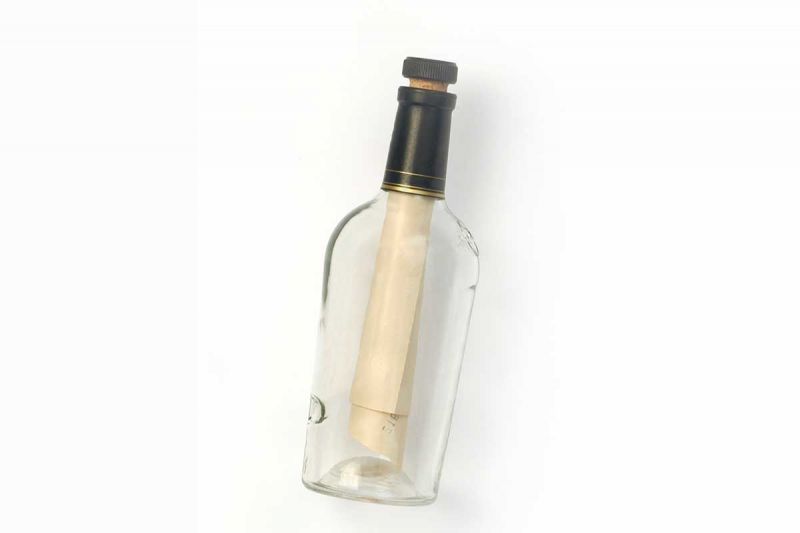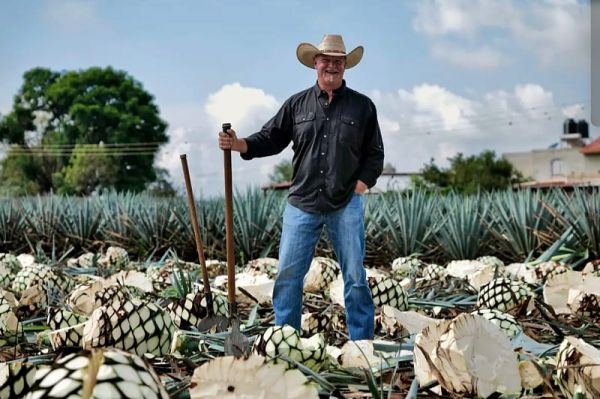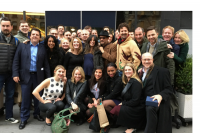Log in to your account
Lost password?Distribution
Fifteen Tips For Importers and Distributors to Expand Distribution in the U.S.
Every brand in the ultra-competitive U.S. market wants to expand distribution. Many export countries have identified the U.S. as their single most important target market.
05/02/2017

The typical scenario for wine and spirits producers represented in the U.S. is for producers to sell to an importer, which sells to a distributor, which sells to an on- or off-premise account. Importers and distributors must perform many market activities well, both separately and together, for their brands to succeed. In fact, an effective importer/distributor relationship is a good barometer of a brand’s success in the market. The following tips can help importers and distributors expand their U.S. distribution.
Note: In the U.S., there’s also a different scenario: seventeen “control states” wherein the state has a monopoly over the wholesale and/or retail distribution of wine and spirits. In effect, the control state functions as distributor or retailer. For example, the Pennsylvania Liquor Control Board’s “state stores” act as both distributor and retailer. We’ll examine control state distribution in a forthcoming article.
1. Importers Should Formulate a Compelling Description for Their Company
Just as an importer’s brands have an identity and DNA, the importer needs these, as well. Not overly long, this should be more elaborate than an “elevator pitch” and communicate important, salient points about the importer, its values and brands. Obviously, the overall message should be consistent with the brand stories in the portfolio.
2. Importers Should Choose a Distributor Partner That is a Good Fit For Their Brands
Many small and mid-sized importers choose to distribute their brands themselves, especially in their home markets. For companies with the resources, this has many benefits, but often, this isn’t the case, as with large, national brands represented by a single importer or with small brands that choose different regional distributors in each U.S. market. Big brands with large marketing budgets are a natural fit with big distributors, which represent many “monster” wine and spirits brands. Small brands are easily lost in a big distributor’s catalog, and are better served by small or mid-sized regional distributors who can personally learn and communicate small brand stories better.
3. Importers Should Choose Appropriate Markets for Their Brand and Brand Budget
Even with a unique wine or spirit product, an importer that hopes to compete in a major market will need some brand budget and the help of a good public relations or marketing company to help their brand make an impression that can penetrate through the clutter. If their distinctive product lacks a significant budget for marketing, they may want to focus their energies on a secondary market in the South, Southwest, Midwest or Pacific Northwest. Restaurant and retail accounts in secondary markets are not constantly hassled by an endless stream of sales reps and are more likely to be receptive to a market visit. These accounts often appreciate a consistent presence and market activity that drives sales.
4. Importers Should Produce POS for Accounts to Help Sales
Many retailers without large sales staff on the floor use shelf talkers, neckers and sell sheets. Larger franchise or multi-state retailers like case cards and print materials that accompany case stacks. Many suppliers make POS material for their brands, but often this is “generic,” lacks reviews or ratings for specific markets, and is not consistent with marketing campaigns for specific markets.
5. Importers Who Can Distribute Their Own Brands Learn About Their Accounts
Importers that have the necessary resources can distribute their brands themselves. Selling directly to their on- and off-premise accounts is a big advantage. Their sales reps can learn the most about their accounts (strengths, weaknesses and preferences), and this knowledge can inform a strategic plan for a given product. Sales reps can build strong relationships directly with customer accounts. The importer can learn which accounts are best suited to present their brands and brand stories in the market.
6. Distributors Should Offer a Strong Selection of Products in the Value Range
These days, most restaurant and retail consumers are relatively frugal when making wine and spirits purchases. Buyers are following their lead. Well-established brands that have patiently built years of momentum in the sales channel enjoy an advantage, but consumers are making buying decisions carefully. Distributors should not give any buyer a reason to cut conversations with their sales reps short. Their portfolios must include strong products in major categories known for value, i.e. Pinot Grigio, Malbec, Prosecco, Cava, New World Sauvignon Blanc, and Chianti. They may not have a broad selection, but they should have at least a few. These are the most effective weapons with which to arm their sales reps.
7. Distributors Should Give Their Accounts Excellent Customer Service
Their brand may have an unlimited budget, they may be best friends with the CEO of the biggest distributor in the U.S., and their producers may send them a blank check each quarter to help their brand. Distributors that don’t have an unlimited brand budget may want to follow the old fashioned sales philosophy: “Under promise and over deliver.” The best customer service people pick up the phone no matter the time. They personally deliver product at the last minute so that their accounts can get through a weekend without running out. If their accounts have products with a big following that are being poured BTG, the best distributor sales reps will remind their buyers well ahead of a vintage change or end of stock, so that their accounts can be pro-active. In anticipating potential problems, the best distributors treat the health of their account’s business like their own.
8. Distributors Should Listen to Their Accounts, Not Their Egos
When adding new products to their portfolios, distributors should listen to what restaurant and retail accounts say. Their accounts, and the market as a whole, will say what they need if the sales rep listens. Good accounts know their customers intimately and they know what they can sell. There’s no need for sales reps to “re-educate” an account about a product category known for value (Prosecco, Pinot Grigio or Malbec), especially when they’ve expressed they only want a correct wine, not a “high end example that re-defines the category.”
9. Distributors Should Update a “Being Poured At” List to Help Sales
Retail and restaurant accounts that are on the fence about pulling the trigger on buying a product often ask, “What restaurants are pouring this?” This is useful info to help them sell your product. Distributor sales reps should have this in their back pocket. Sometimes, restaurant buyers want to know which retailers carry your product.
10. Importers and Distributors Should Work With Suppliers to Support Sales
Nothing can damage brands—or hurt account relationships sales reps have painstakingly built—more than mistakes by importers and distributors that hurt their business. Not sending a good tech sheet or sell sheet to an account that has requested it. Running out of inventory of a key product prior to the holidays. Scheduling multiple winemaker visits that don’t help sales or the brand. Accounts will not tolerate poor performance. Importers who pay their suppliers quickly are more likely to receive a favor (an additional shipment of a hot product, a last-minute container, an exclusive library release) when they most need one.
11. Importers and Distributors Should Feature Producers Who Frequently Visit and “Work the Market”
A big brand with a six- or seven-figure marketing budget already has an existing image and has made an impression on consumers. Aside from that, the most effective way to personalize a brand is for a key person from a producer to visit the market and help “give a face to the brand.” Many producers understand the advantage of being present in the market and visit several times a year. Others refuse to accord market visits the importance they deserve, preferring instead to leave the heavy lifting of building their brand solely to their importer or distributor. These producers and their brands are rarely successful.
12. Importers and Distributors Should Present Their Brands on a Range of Social Media Outlets
Wine industry analysts have reported that, very soon, Millennials will supplant Baby Boomers as the largest segment of wine consumers. Unlike Boomer consumers, who still use traditional media (print, radio, TV), Millennials prefer new media content from their laptops and smartphones. Brands should have a presence on multiple social media outlets (FB, Twitter, Instagram) to engage younger consumers and buyers alike. Importers and distributors can utilize social media to communicate with their accounts interactively so that a community can be nurtured and developed.
13. Importers and Distributors Should Publish Content That Leverages the Strengths of Each Social Media Outlet
To encourage customer accounts and consumers to subscribe to multiple social media outlets, the content should leverage the strengths of each outlet, i.e. FB can help promote tastings or in-store events, Twitter is great for consumers to exchange their product impressions in real time at a tasting or event, and Instagram is a good place to post photos of a wine dinner or trade event.
14. Importers and Distributors Should Communicate a Story for Each Brand
Importers should prepare a strong story for importer and distributor people to convey about each brand. Selling points can be extracted from the story, which should not be too long, but express the DNA and identity of the brand. Any importer should be able to quickly tell a brand’s story to their distributor, whose sales reps should articulate to accounts.
15. Importers and Distributors Should Develop Relationships With Key Influencers in Each Market
Every state, area or city market has key influencers, tastemakers and gatekeepers who can write, tweet, blog and post about an importer or distributor and its brands. Importers and distributors should take time to build these relationships, which can result in positive brand exposure in traditional media and social media outlets.
The typical scenario for wine and spirits producers represented in the U.S. is for producers to sell to an importer, which sells to a distributor, which sells to an on- or off-premise account. Importers and distributors must perform many market activities well, both separately and together, for their brands to succeed. In fact, an effective importer/distributor relationship is a good barometer of a brand’s success in the market. The following tips can help importers and distributors expand their U.S. distribution.
















